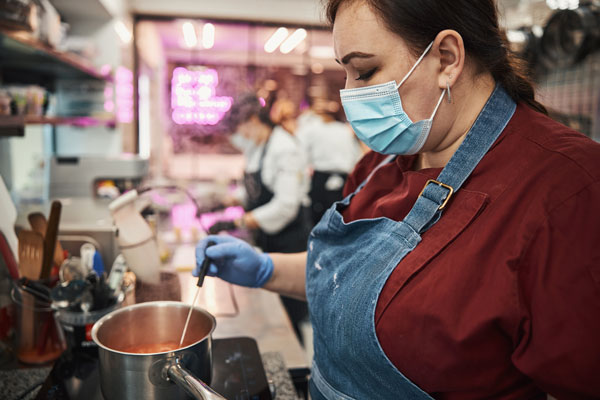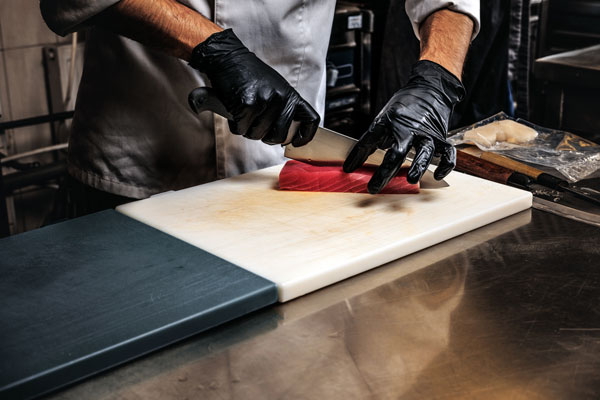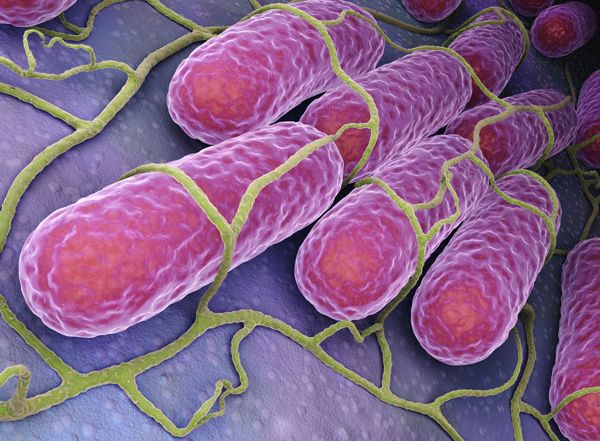Contamination of Food: Let’s Get Physical
Earlier this month, we began a discussion about contamination of food. Our first blog focused on chemical contamination, but in this blog, I’d like to look at physical contamination of food.
Any item which does not belong in the food product can be considered a physical contaminate, a hair, a piece of plastic or metal, or even a fake fingernail. While some physical contaminants, such as a piece of hair in your food may only be disgusting, other physical contaminants can cause serious injury to the consumer, including lacerations to the mouth and intestines, broken teeth, or can pose a serious choking hazard
When food arrives at your foodservice facility and throughout production, it is vital that you have strong controls in place to maintain the integrity of the food, limiting chances for inadvertent contamination of physical objects.
Physical hazards were not something I generally had to deal with when I was in operations, I imagine the same can be said for many of you. I do recall one incident when we had a chicken salad sandwich returned by a customer, who found a red acrylic fingernail in their chicken salad. When we surveyed the staff that day, we found that the salad, which was a prepackaged product, was opened that morning and none of our staff had on fake fingernails. Meaning the product had to come from the manufacturer. Luckily, the acrylic fingernail only caused disgust and no serious injuries.
While food companies work exceedingly hard to keep their products free from physical contaminants, it does occasionally occur. In 2021 and through January of 2021, 14 food recalls were issued in the United States due to foreign objects in food, including metal, plastic, glass, and small stones.
When food arrives at your foodservice facility and throughout production, it is vital that you have strong controls in place to maintain the integrity of the food, limiting chances for inadvertent contamination of physical objects. Here are four tips to help you in achieving this goal:
- Establish and monitor dress control policies, such as requiring employees to remove jewelry and wearing a hair restraint while in food production.
- Practice preventative maintenance on production equipment and repair or replace damaged equipment and parts immediately.
- Encourage employees to report any issues with equipment to supervisors and be sure to follow-through with corrective action. Not doing such will just cause employees to ask why they are reporting things when nothing ever gets fixed.
- Work with a reputable pest control company who works with you and your employees in establishing a solid and effective pest control program.
Underpinning all of these is to be sure you create and sustain a culture of food safety throughout your organization. Managers and all staff should know that nothing is so important that it cannot be done with food safety in mind. Check out our previous blog on developing this culture to make sure you operation is on the right path. Risk Nothing.
READ MORE POSTS
Food Traceability in Foodservice Operations: An Essential, and Soon-to-be Required, Component of your Food Safety Plan
In June, I discussed the importance of having a solid food defense plan, and I provided you some resources for developing or strengthening your food defense plan. As I was writing those blogs, my mind kept turning toward food traceability. While they are distinctly different concepts, food traceability goes hand-in-hand with a food defense program. I would argue for your food defense plan to be effective, you must have an effective internal food traceability program, where you can trace the product back to the supplier (backward traceability), but also be able to trace the product from the supplier to the guest who was served the product (forward traceability).
Food Defense Plan Resources – at just the right price…
Earlier in the month, I discussed the importance of having a solid food defense plan in place for your foodservice operation. Even if the first version of your plan is not perfect, it is a start. Having plans down on paper will force you to think through the process and ensure the vulnerable points where opportunities exist for possible contamination within the operation are mitigated.
Don’t Turn a Blind Eye to Your Food Defense Practices
Late last week, as I mindlessly scrolled through Twitter, I ran across a Tweet suggesting the #IceCreamChallenge from summer 2019 was the real cause of the Coronavirus spread. Of course, the Tweet was made tongue in cheek, but it did cause me to reflect on that challenge, which had a short life on social media in the summer of 2019.
Salmonella and Listeria monocytogenes: Serious Threats to the Safety of Food
Earlier in the month, I mentioned the top microbial enemies we all face in foodservice operations, E. coli, Campylobacter, Salmonella, and Listeria monocytogenes. While we discussed E. coli and Campylobacter, we did not get around to discussing Salmonella or Listeria monocytogenes.










